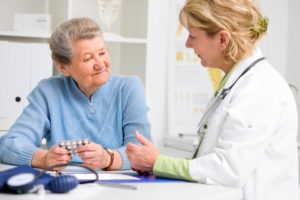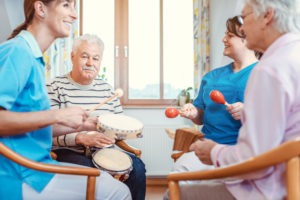6 tips to fight osteoporosis
The bone degeneration caused by osteoporosis affects 200 million women worldwide, and is the #1 contributor to length of stay in hospitals for women over age 45, notes the International Osteoporosis Foundation (IOF). In the United States alone, osteoporosis is the underlying cause of two million broken bones and $19 billion in related costs every year, according to the National Osteoporosis Foundation.
Although about 68 percent of Americans with osteoporosis are female, men can develop osteoporosis, too, especially those who are underweight and have risk factors for the condition.
 The IOF suggests five strategies for maintaining bone strength in residents:
The IOF suggests five strategies for maintaining bone strength in residents:
- Provide venues for exercise, at least 30 to 40 minutes each week. For older adults, resistance training becomes more important than other types of exercise and helps to maintain proper gait and balance as well.
- Encourage residents to maintain a bone-healthy nutritional program, with proper calcium and protein intake and fresh fruits and vegetables.
- Monitor residents' body weight and body mass regularly. Women who are underweight have increased risks for osteoporosis.
- Discourage smoking and the excessive intake of alcohol.
- Review family risk factors with residents, explaining how a family history of certain diseases, such as diabetes, celiac disease, Crohn’s disease and rheumatoid arthritis, are known to increase the risk of osteoporosis.
- Encourage residents to seek a fracture risk assessment (FRAX) or bone density test through a physician. Since the fastest loss of bone in women occurs during menopause, women who enter menopause before the age of 45-50 are especially vulnerable to weakened bones later in life.
“Worldwide, one in three women over the age of 50 will suffer a broken bone due to osteoporosis,” notes John A. Kanis, president of the IOF. “Yet too many women are unaware of their increased risk after menopause and fail to take preventive measures.”
The IOF offers a free online osteoporosis risk test.

Pamela Tabar was editor-in-chief of I Advance Senior Care from 2013-2018. She has worked as a writer and editor for healthcare business media since 1998, including as News Editor of Healthcare Informatics. She has a master’s degree in journalism from Kent State University and a master’s degree in English from the University of York, England.
Related Articles
Topics: Activities , Articles , Clinical , MDS/RAI , Nutrition , Rehabilitation











